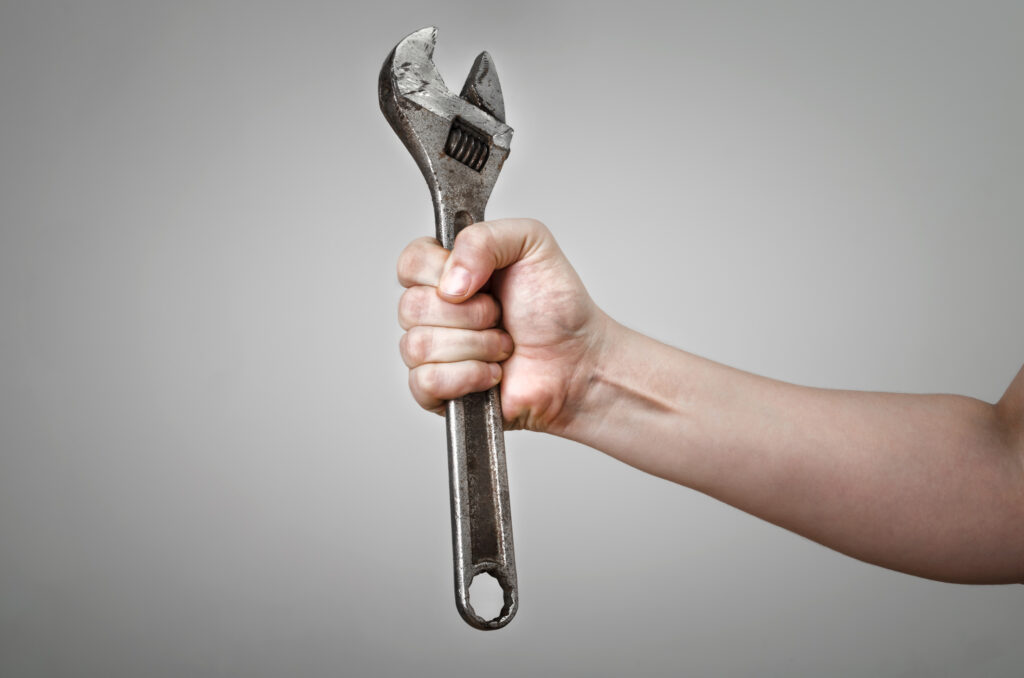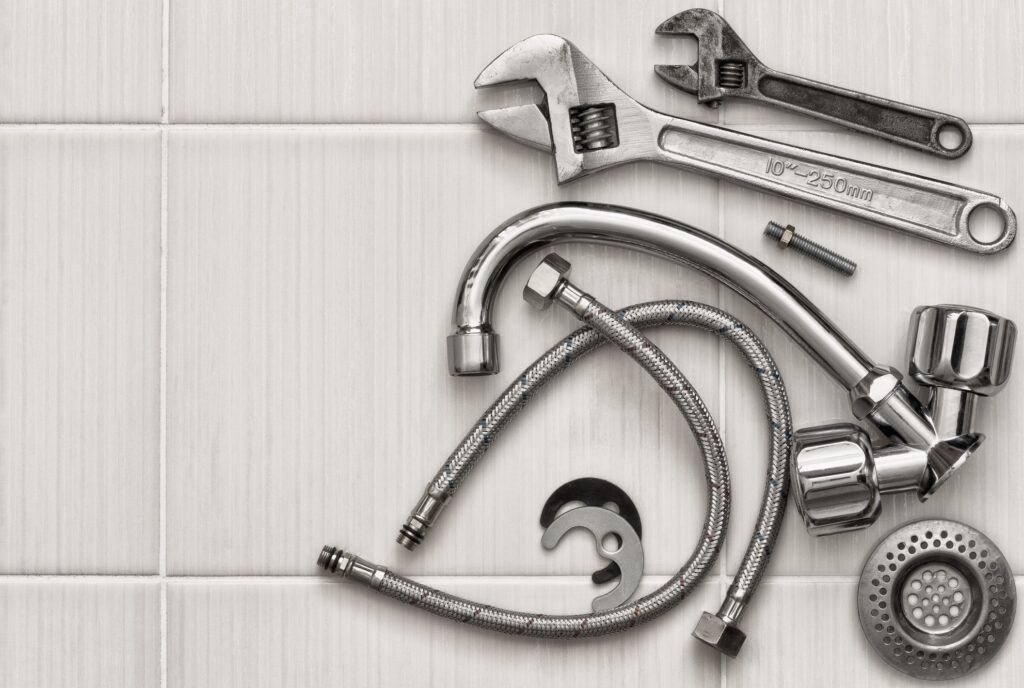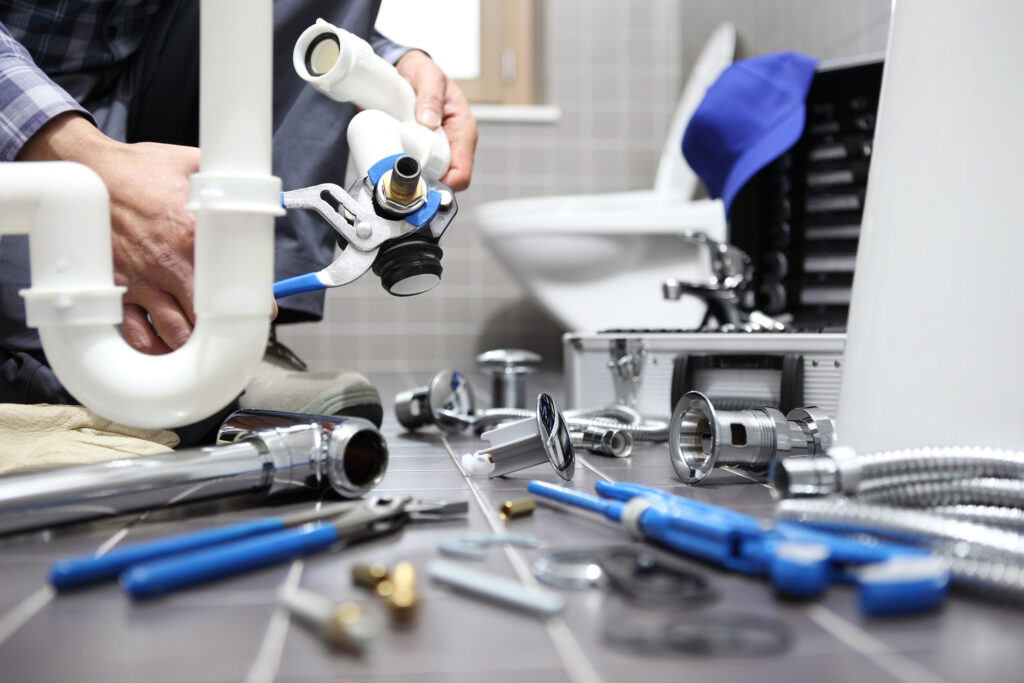Part of owning a home or commercial space includes the responsibility to educate yourself on the way the mechanical systems in your home function on a basic level, to make sure you are keeping up on maintenance, or knowing when you need repairs. Sometimes, it’s a crash course when something big goes wrong, but hopefully it’s a slower process, by reading tips from professionals, and learning the “quirks” unique to your home! Not all tips apply to all situations, but a little help can go a long way to preserving the value of your property investment.
- Only flush the 3 P’s. Toilets are only designed to handle Pee, Toilet Paper, and Poop. Nothing else. Not prescriptions, not paper towels, not sanitary products, and definitely not diaper wipes or “flushable” wipes.
- Know when to call it. DIY is great, to a point. If you are in over your head, don’t be afraid or embarrassed to call a professional licensed plumber.
- Be absolutely certain the “online deal” faucets you are purchasing are certified to be lead free by EPA Standards. Look for UPC/NSF/ANSII certifications, and verify that the manufacturer is credible if they say their fixtures are EPA compliant. Check the link for actual images of what the seals should look like. ZyPDF.cgi (epa.gov)
- Check rarely used rooms in your home for signs of water damage. Run faucets and drains and look for signs of leaks. If you have a guest bath that doesn’t see much use or a basement sink that is hidden in a corner, slow leaks may go unnoticed, until there is a bigger issue.
- Make sure you have the right product for the job if you are trying it yourself. Pipe material, glue, solder, fittings – all need to be the correct material for the water, waste, or gases you are running through it.
- Winterize your outdoor or exposed water lines. The best time of year to inspect and insulate pipes in your crawl space is the middle of summer – it’s cool down there, and the drier conditions should make evidence of leaks more obvious.
- Know where your main shut off is to your home or business. If you have sewer cleanouts, look for those too. In the event of an emergency, shutting off the main supply can save you from flooding.
- Consider the value of the information you are consulting. Is this “how to” video I just watched code compliant for my State or City? Remember, you always get what you pay for, and there is no plumbing regulation oversight on “free advice” or “how to videos.”
- Never introduce strong chemicals into your drains to try to “bust clogs.” Not only are you introducing highly corrosive materials which could damage your pipes if it sits there for any length of time, all those nasty chemicals drain into the sewer, which means those same chemicals are polluting local waters.
- Be picky about your plumber. Shop for a trusted licensed professional before you experience plumbing issues, so you aren’t searching for one when you do need plumbing help.
- BONUS TIP: Anyone who can provide you with a firm quote for full price over the phone is not being honest with you – they can’t know what is existing in your home, and what they will be serviced until they actually set eyes on it. Imagine your car mechanic being able to tell you an exact price for repairs, based on your imitation of the squealing sounds you hear from your car, but you can’t tell the mechanic what model or year your car is- only the make.
Essential Plumbing Maintenance Tips from the Pros:
Maintaining your plumbing is a great way to not only keep repair costs lower, but also saves water and ensures home wastes are treated properly.
- Know what should and should not go down the drain. A waste disposer is not a commercial grade grinder and should not be used in place of a garbage bin. Anything sticky or oily or tangly at room temperature should not go down the drain. It will congeal or wrap up like a velcro ball at some point down the drain line and cause a clog.
- Keep an eye out for leaks and drips. Regularly examine your water heater, faucets, taps, drain lines under sinks, and any visible areas where water lines, or drains, or gas lines connect to each other for signs of leakages.
- Open and close all your faucets, inside and out, on a regular basis. If you notice one is getting harder and harder to open or close, keep note of it. At the same time, evaluate the flow rate of water going down the drain. Does it seem slower than usual?
- Keep your manufacturer’s warranty coverage current, by following the manufacturer’s recommended service schedules and using the products they recommend for cleaning. You can actually void your warranties if you do not have these services performed at manufacturer recommended intervals, or you use cleaning products that can damage the finishes on the fixtures.
- Periodically flush toilets and run water down drains you don’t use on a regular basis. Keeping seals hydrated prevents them from drying out and leaking. Keeping drains wet/ traps filled with water prevents sewer gases from coming into your home.
- Listen for water sounds. Every now and then, turn off the TV, turn down the music, and turn off the phone. Walk around your home or business and listen for water sounds – hissing, whistling, dripping, flowing sounds can develop when water or gas finds its way out of pipes or fittings.
- Evaluate the hoses attaching your water using appliances to the angle stop or valve at the wall. Are there cracks, weird bulges, or signs of wear? Don’t forget to look behind your fridge for the water line if you have an ice maker. Vacuum out that condenser fan while you are at it 😊.
- Check your caulking around the base of the toilet, tub, tile enclosures, or any other wet area where caulking is used to seal plumbing fixtures. Correct caulking application is critical to ensuring seals function properly and allow for seepages in the correct areas.
Plumbing Tips for Homeowners
Just like when you bought your first car, and you learned all about maintenance, repairs, and restoration or customization, owning your own home provides you the experience of maintenance, the opportunity for repairs, remodeling, and improvements. Similarly, whether you choose to perform the maintenance or repairs yourself, or you opt for professional help is up to you.
- Build a plumbing tool kit – think of it as your “First Aid” Kit for the plumbing in your home. Proper tools include various sizes of pipe wrenches, various sizes of crescent wrenches, a power drill, a plumber’s thread seal tape, and a hacksaw. If you can, purchase a water key to shut off your water at the meter. This tool can literally save you thousands in damages if you ever need it.
- Have a plan and learn as much as you can about your home’s history. Establish a baseline, and then review your plans, as your needs and budgets change. How old is the home? Were there ever any major renovations? Are there pictures, plans, or documentation like receipts or invoices from those renovations or prior repairs? Was there a sewer scope done at any time and is there a video? Is this property going to be my forever home, a rental home, or is this my starter home? Do I want to remodel in the future, or add plumbing fixtures to what is already here? All of these details can help organize your current plumbing needs, determine what kind of repairs and fixtures you want, and help with future plumbing plans.
- Determine your skillset, decide what you are comfortable with doing yourself, what you would like to learn more about and try, and what you want professionals to perform. I can slap a band aid on my finger, but I want a doctor to set my broken arm.
- Know how to shut off the water. At each plumbing fixture, there should be a valve, or angle stop, where the water line comes in from the wall or floor, to shut off the supply of water to that toilet, faucet, dishwasher, washing machine, ice-maker, or pot filler. In the event you need to shut the water off to your entire home, there may be a whole home shut off located in a garage, utility room, or the room closest to where your water main enters your home. If you live in a single-family home, you may also have a shut off at the water meter, where the city checks your water.
- Invest in a leak detection system. There are quite a few products on the market, each with its own features. Some are very simple with audible alarms, some have wireless technology, some have instant shut off features, and some create a whole water use history for you. You may even get a reduction in your homeowner’s insurance if you have one installed.
- Learn how to safely shut off your water heater, how to shut off the supply of water to your water heater, and drain your water heater.
- Learn how to safely shut off your gas after the meter outside your home.
- When you install new water using appliances, change the supply lines and the hoses. A new pair of running shoes with old shoelaces just doesn’t make sense.
- Save yourself from repeated clogs and expensive repeat drain cleaning services by using drain grates, drain screens, and keep oils, grease, coffee grounds, vegetable parings, eggshells out of the sink.
- Toilet plungers are for clearing toilet clogs only. Using a plunger on any sink to clear a clog can potentially separate the segments of the drain pipe with all the pressure. Sink drains simply are not built to stand up to that much force.
- Too much of a good thing. Over-tightening fittings and connections and too much plumber’s tape. If you He-Man the fittings and connections between pipes, you risk stripping the screw threads or breaking bolts. Too much plumber tape can crack the female adapter.
- Pick fixtures and faucets from a manufacturer that has a proven record for quality and warranty coverage. Moen, Delta, Grohe, Kohler, American Standard, Bradford White, Navien, etc. You can rely on them to have a variety of styles to fit your design and stand behind the products they produce.
Plumbing Repair Tips
Whether you are doing your own plumbing repairs or start a repair and can’t quite get it completed, or you just want to trust it to the professionals, the tips below can help you decide how to tackle plumbing issues in your home.
- Clean your faucet aerators and showerheads. If you are experiencing weird water flow out of your faucets or showerheads, it could be something as simple as cleaning the sediment or mineral build up out of the screen or showerhead.
- Don’t toss that goofy looking metal wrench under the kitchen sink if you have a waste disposer. That hex wrench is to help free up the plates inside the waste disposer by rotating the turntable inside to dislodge clogs.
- When replacing faucets, shower handles, or any kind of plumbing accessories that match a particular faucet, write down or save the Manufacturer, Product line name, Part Number, specific name of the color of the finish, and year you purchased it.
- Address and repair water leaks in a timely manner. Water damage is one of the most extensive and expensive repairs in your home. If you spot drips, water stains, mold, or bubbled paint, all are indications there is a leak.
- Never fully drain a hot water filled water heater refill it. Thermal shock can damage the metal components when all that cold water rushes through it. Luckily, we live in an area with soft water, so sediment and mineral buildup are not a large issue.
- Regularly clean your shower, tub, and vanity sink drains due to the daily use and introduction of hair and soaps. Learn how to remove/re-install the stoppers, use those little dental pick tools, and fish out those yucky hair clumps, before they travel too far to clean out at the drain opening.
- Address that toilet that constantly runs or intermittently flushes all by itself as soon as possible. Literally 3- 4 ½ gallons of water a MINUTE could be wasted. Even if the flapper is just loose, it could waste up to 200 gallons a day.
- Don’t be tempted to re-use a wax ring once you have set a toilet. Even if you only set the toilet on it for a minute, and then had to pull the toilet off to reposition it. Wax rings are cheap. New flooring and subflooring is not.
- Safety first. Imagine the worst possible outcome of what you are about to work on. If you aren’t ready to address the worst case scenario or have a plumber on speed dial and pay the “emergency visit” surcharge on a Sunday, call a professional.
- Don’t believe everything you read on the internet or anecdotal stories from your friend about what a success their cousin’s DIY project was. Typically folks remember only the good highlights and not the gory detail.
Outdoor Plumbing Tips
Keeping water in its place and running where it should go is just as important on the outside of your home or business, as it is on the inside of your home or business.
- Determine if your home is on septic, sewer and if any part of your sewer is a shared sewer. This will dictate how your wastewater is treated, and give you a game plan on if you need to work with a septic company, neighbors if it is part of a shared system, or if you alone are responsible for any waste water lines on your property.
- Find out if you have side sewer cleanouts and stormwater cleanouts located inaccessible areas in your yard. This feature makes drain cleaning much more effective and cheaper for you in the long run.
- Clean your gutters regularly and sweep your impermeable driveway and sidewalks. Keeping all the leaves, needles, and sediments from entering your storm system in the first place will keep your storm drain running smoothly. Remember, anything that enters a storm drain system is unfiltered and ends up in your local creek, river, lake, or bay.
- Wrap your exposed pipes, then check back periodically to make sure rodents haven’t decided to use pieces for nesting material, or there are signs of leaks.
- Inspect all your outdoor faucets. They should open and close firmly, but not be difficult to turn.
- If you have an outdoor kitchen, don’t forget to winterize the water lines, and check the drain regularly for function. Being outside introduces the opportunity for more dust, pollen, and critters to make their home inside a nice drain.
- Find out if your waste lines are boosted by a pump to move the waste or stormwater off your property, and into an appropriate sewer line, storm line, or drain field. Make sure to have this inspected and serviced regularly.
Get Professional-Quality Results
Now that you have your homework lined out, it’s time to poke around the house or workspace and learn all about your home or business’s plumbing systems. When you find you need a licensed, professional team to help you keep your plumbing in its best working order, call Stollwerck Plumbing & Sewer!





Recent Comments